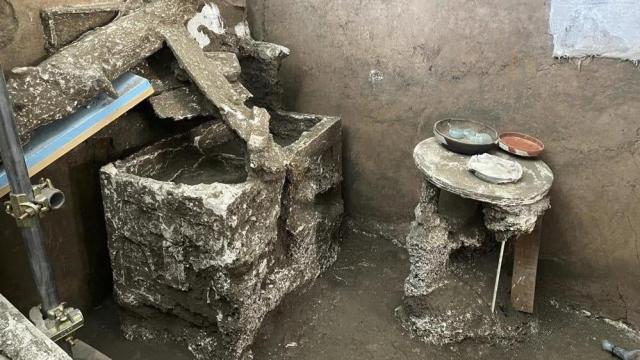Archaeologists at Pompeii have announced the discovery of several furnished rooms in the House of the Lararium, a middle class residence on the ancient city’s northern side.
Pompeii was famously preserved by the devastating eruption of Mount Vesuvius in 79 CE, an eruption that baked and suffocated its cosmopolitan habitants in superheated pyroclastic flows. The eruption covered the surrounding area in the Bay of Naples in ash, freezing in place victims and scenes of daily life at Pompeii (and the nearby town of Herculaneum) for nearly 2,000 years.
Rediscovered in the early 18th century, the two cities are a cornucopia of information about quotidian Roman life in the first century CE, revealing what residents ate, how they lived, who they were, and of course how they died.
Archaeologists uncovered the House of the Lararium 2018 in Pompeii’s Regio V, a roughly 21.85 ha swath of the city’s northern edge that has only recently been the site of thorough excavations. Archaeological discoveries in the area have included a thermopolium, or Roman snack bar, a headless skeleton pinned under a big rock (the skull was later found), and, perhaps most groundbreaking, charcoal graffito that indicates that Vesuvius’ eruption occurred later than previously thought.
“Pompeii is an ongoing discovery that continues to inspire awe,” said Massimo Osanna, Italy’s director general of museums, in a Pompeii release, “and not only from a romantic point of view, which undoubtedly marks the interest not only of scholars, but also, above all, for its unique quality of being an inexhaustible laboratory of study and learning.”
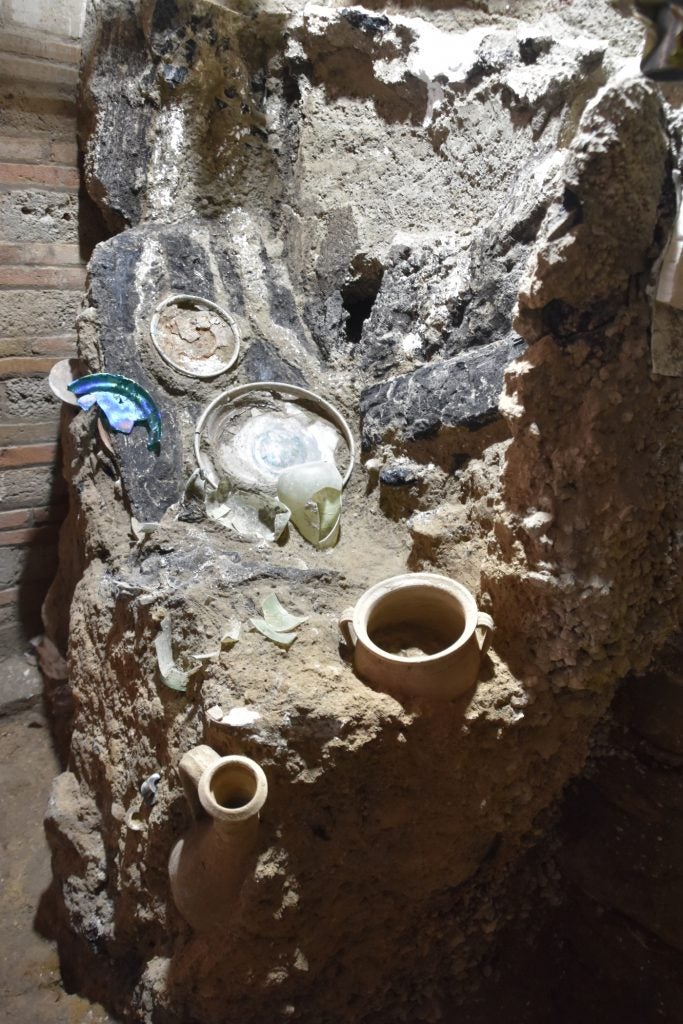
The recently excavated house is named for lares, a group of deities known for being guardians, especially of households or communities. The building has a niche in one wall that was dedicated to the lares, and the surrounding walls are adorned in painted murals depicting plants, birds, and hunting scenes.
Gabriel Zuchtriegel, the director of Pompeii’s archaeological park, told the AP that the house probably belonged to members of Pompeii’s middle class. “In the Roman empire, there was an ample chunk of the population that struggled with their social status and for whom ‘daily bread,’ was anything but a given,″ Zuchtriegel said. “A vulnerable class during political crises and food shortages, but also ambitious about climbing the social ladder.”
Researchers found the building in 2018, but it wasn’t until last year that the excavation of the site expanded and archaeologists found two additional rooms on both floors of the house.
The excavated rooms contained chests and cabinets filled with Roman tableware like plates, vases, and amphorae. There were also less common objects, like a decorated incense burner in the shape of a cradle, an oil lamp depicting the Greek god Zeus transforming into an eagle, and the remains of a bedframe with some pillow fabric still in place.
The bed would’ve really been a cot — there was no mattress, but a piece of fabric stretched out over rope netting, according to a Pompeii Archaeological Park release.
Several beams and planks from the house’s ceiling had collapsed onto a chest in one of the rooms, but plates still sat on a three-legged table in the room, a surreal look at how quickly life was disrupted — and ended — for the residents of Pompeii.
The excavated room
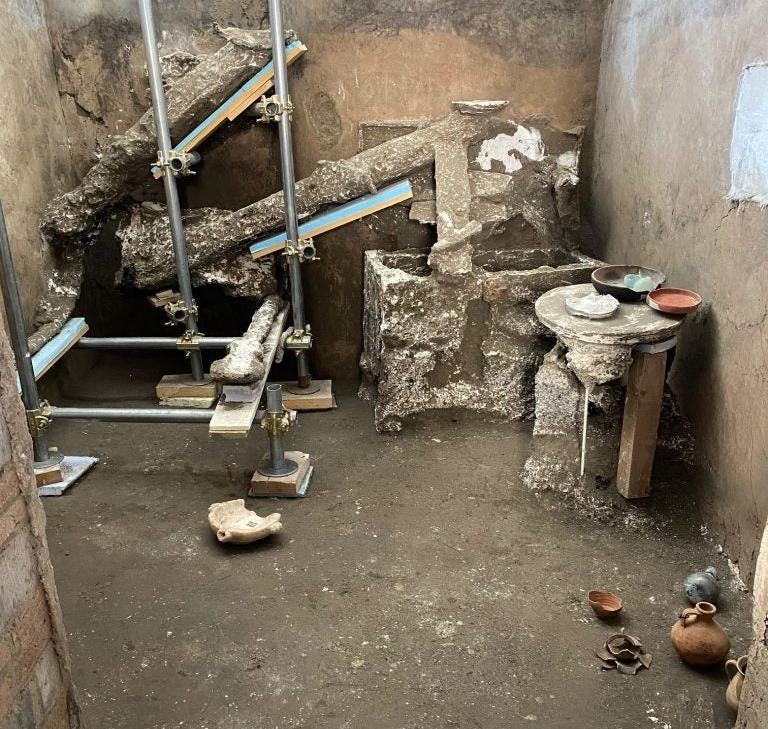
A view of an excavated room in the House of the Lararium. Intact amphorae can be seen in the lower right hand corner, and intact plates sit on the three-legged Roman table. Supports are in place to hold pieces of the ceiling that fell in under the weight of the ash.
The chest in the house
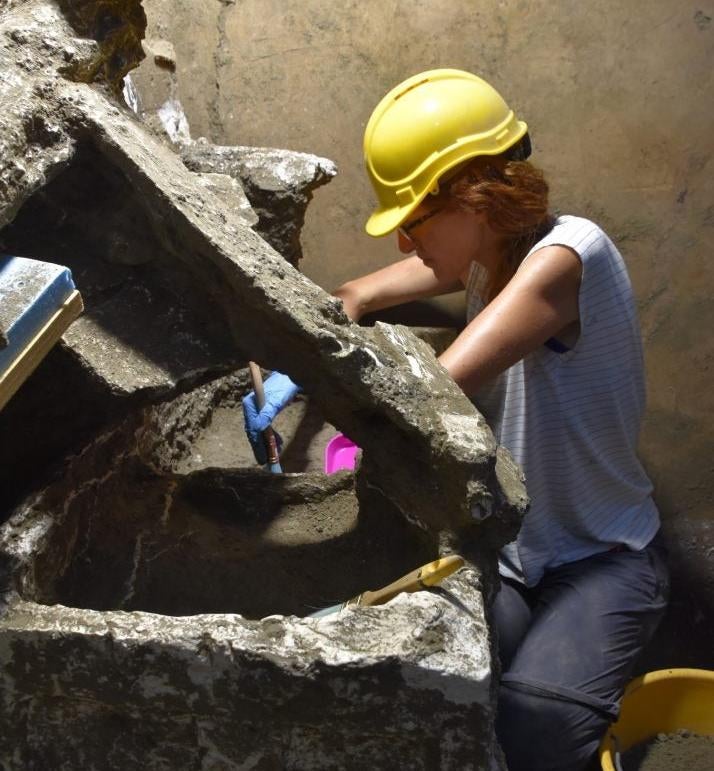
A wooden chest was left open when the eruption occurred — perhaps the residents took out some belongings before fleeing. Planks from the home’s ceiling fell in on the chest.
Waxed tablets
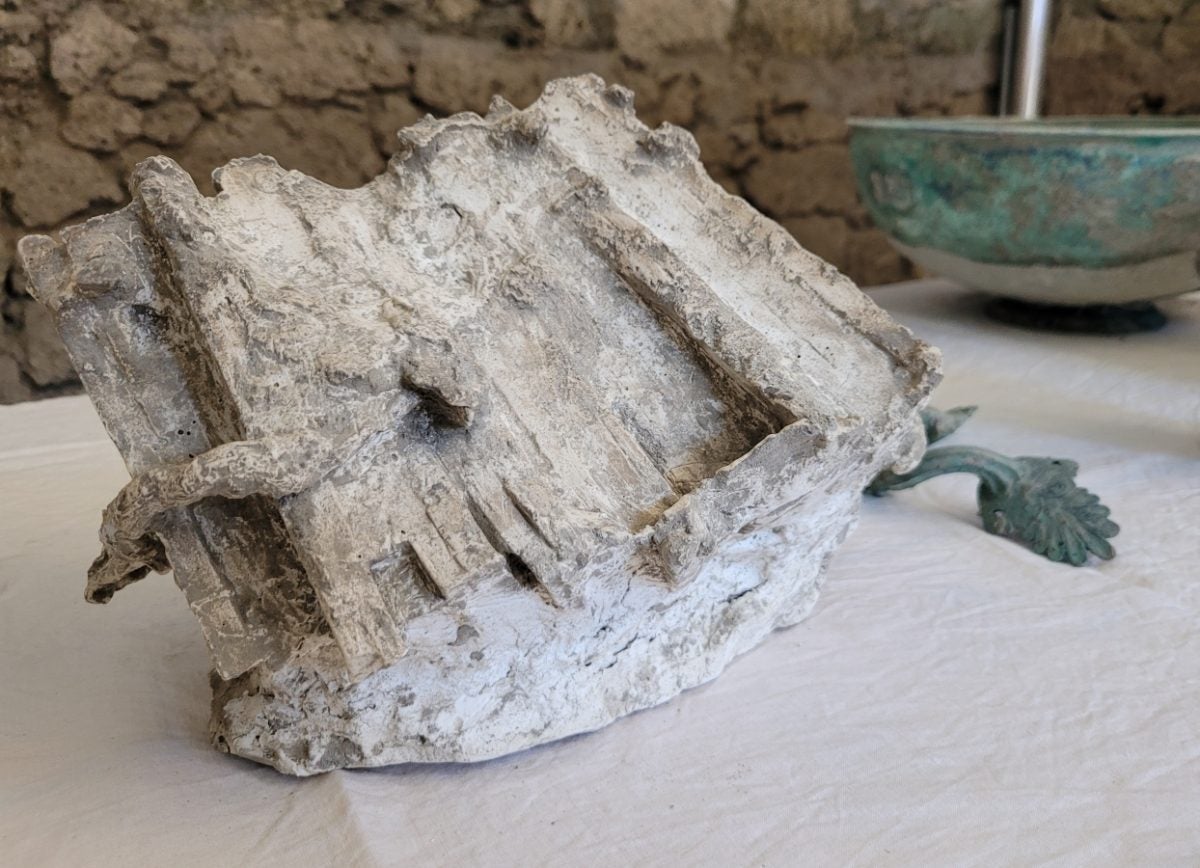
A cast of seven wax tablets bound together with cord. It doesn’t look quite like that now, because the objects were covered in ash that hardened into cinerite, like most of Pompeii was.
A plate in the chest
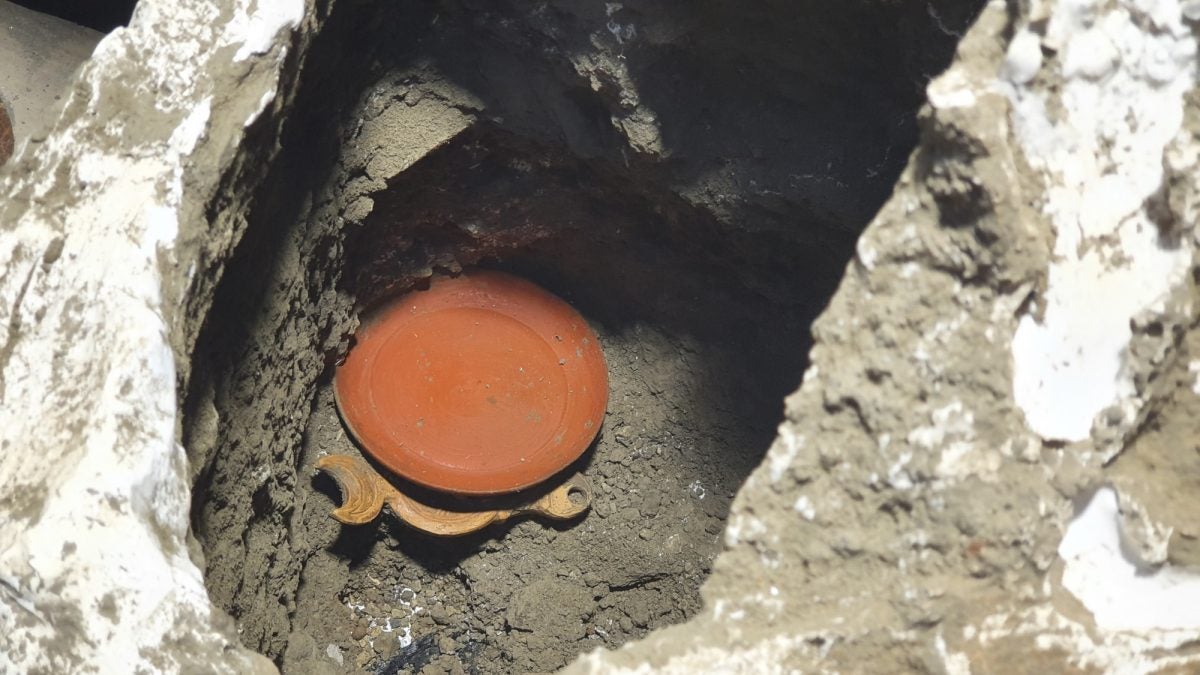
A small plate was inside the ajar wooden chest in the corner of the room. The plate is a sigillata, a name for a certain kind of red Roman pottery. Besides a couple ashy splotches, the plate is in great condition for having endured a massive eruption nearly 2,000 years ago.
An incense burner

An incense burner found on the site. The burner has been painted green, yellow, and red, and with a sculpted head of a man sprouting from one side.
Roman planks
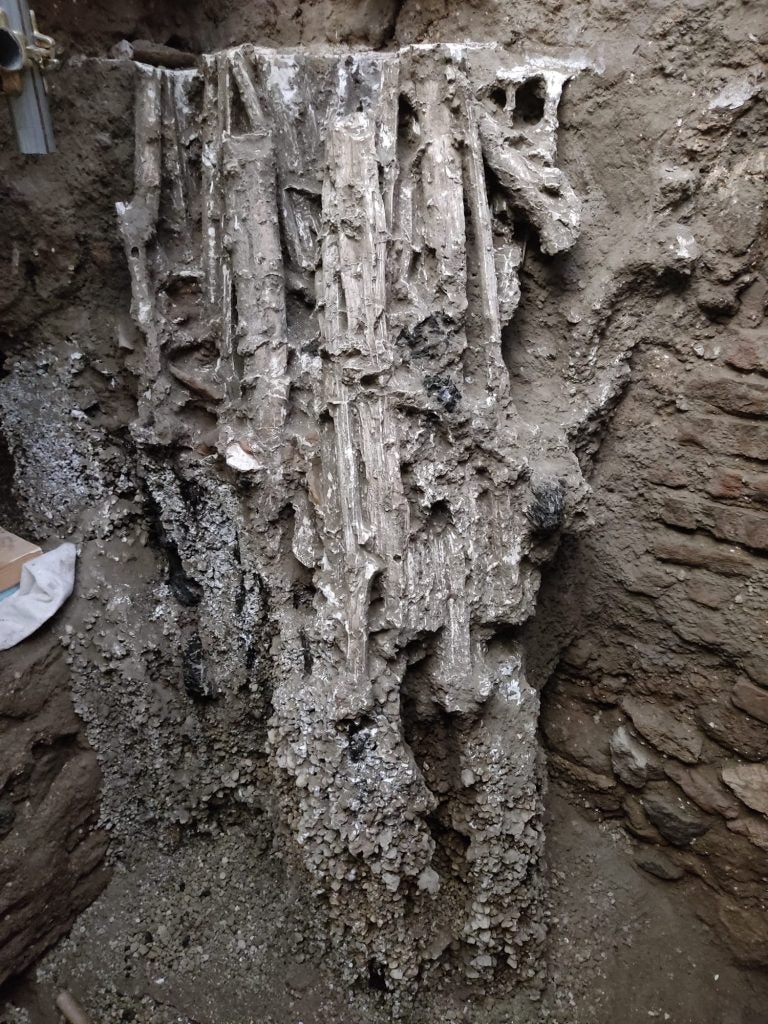
Another room in the House of the Lararium was evidently a storage closet; inside a bound set of wooden planks were found. The planks are of various species, according to a release from the Pompeii Archaeological Park, and were probably used for repairs and other miscellaneous needs.
View down into the house
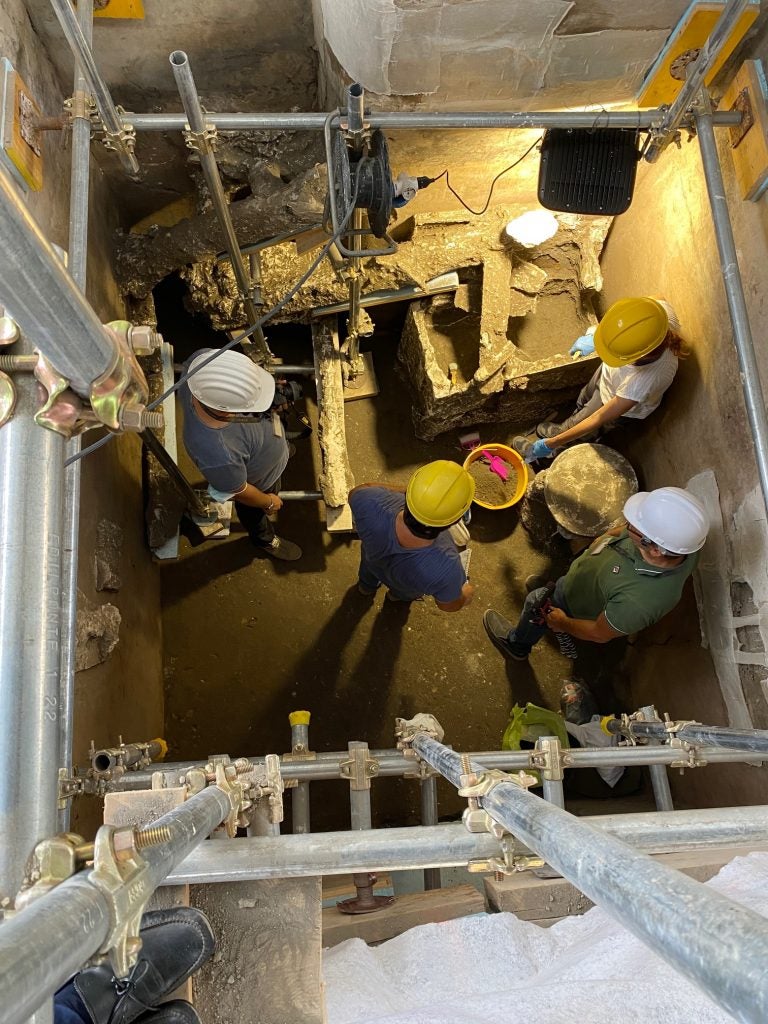
A photo taken from above the room in the House of the Lararium reveals a round table at middle right and open chest at top right.
A collapsed roof
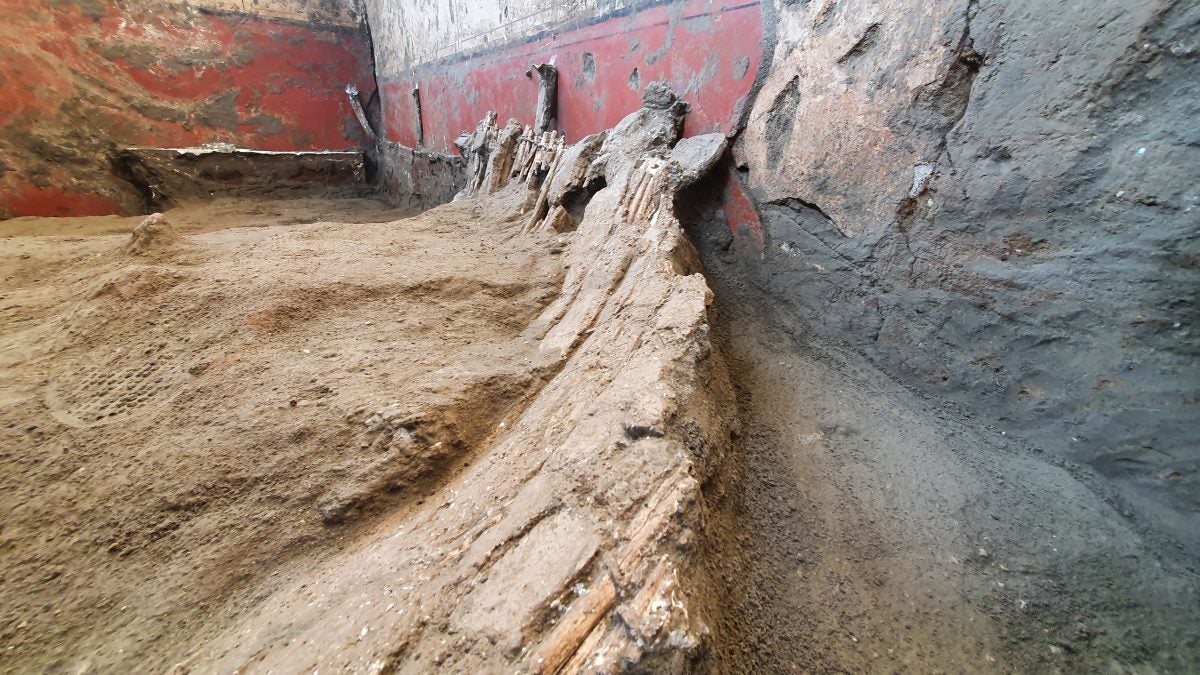
A room of an adjacent building had its false ceiling come in due to the weight of ash and debris from the eruption. More discoveries lie in wait in Regio V.
